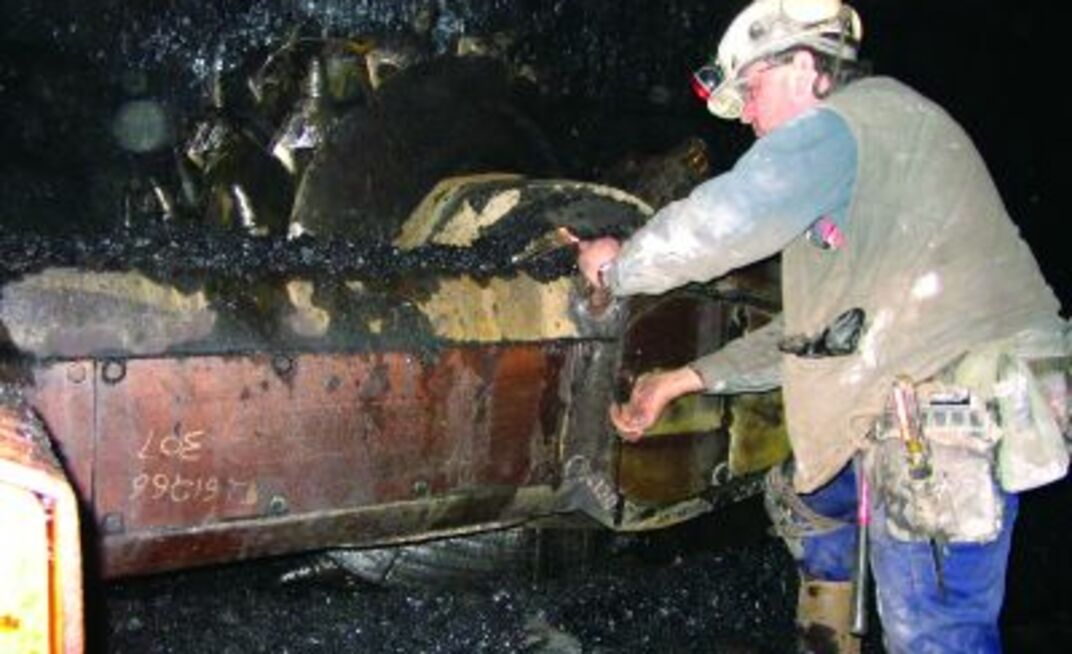Published in the May 2005 American Longwall Magazine
The rising coal market has provided maintenance managers with the perfect opportunity to seek new maintenance technologies, ideas and equipment. If this window of opportunity is utilized and predictive maintenance becomes an integral part of everyday work while the market is up, with any luck, predictive maintenance may be here to stay when and if the market reverses.
Predictive maintenance has taken on varying levels of meaning for the underground coal industry. Some mines use scheduled evaluation of maintenance based on operating tons or hours, with detailed statistics maintained to identify trends.
Commitment to predictive maintenance also often stems from an operation’s OEM agreement. Nowadays, OEMs build much of the predictive maintenance functions into their controls for onboard machine diagnostics.
Predictive maintenance in underground mines, however, is riddled with obstacles. Underground mines face many problems that simply don’t exist for surface mining. The need for approved instruments is essential, and the inability to collect necessary data while machinery is in use can stifle a mine’s productivity.
Another major hurdle is a lack of available room around machinery; a confined space can make it challenging or nearly impossible to apply the requisite hardware for some predictive technologies.
Even with predictive maintenance, failures to processes or equipment can still occur unexpectedly. Roadway hazards concealed by mud, corrosion, excessive bending of the shearer outside of its normal radii and abrasive wear to conveyors from carrying mining rock are all within the realm of occurrences that cause mines to shift into a reactive gear.
The solution one source told American Longwall Magazine was finding that middle ground. “There is a careful balance to be achieved between scheduled production interruption for preventive maintenance and maintenance that can be done in the shadow of a breakdown to optimize the overall mining process.”
Another industry source concurred. “From my own experience in underground operations, the return from the application of technologies such as vibration analysis, infrared thermography and oil analysis can be excellent. The absence of these technologies in underground operations will make them target rich environments where a vibration analyst will quickly and easily pay his way.”
There are many grey areas within the subject of in-house maintenance versus outsourcing. One large OEM, which does its predictive maintenance in-house, said, “This varies by regional markets. Some ... have placed much more of an emphasis on predictive maintenance, perhaps being driven by a shortage of skilled maintenance personnel at the mine level.”
While many mines receive outside services in their early stages, they eventually convert to the resources held in-house. However, many contractors entering a mine from the outside can provide an endless list of services for the client, from oil analysis to accelerated life testing. The type of work to be done, especially in terms of technical issues, is also part of the equation for some mines.
In the end, the choice lies with the mines operators themselves – a decision some OEMs are making easier. The level of service the mine has access to is also negotiable. Machines can be sold with a mine site-specific full maintenance contract, where on-site support is available, even for an extended period of time. In some cases, staff local to the mines are retained to allow for clients’ peace of mind.
Additionally, while equipment involving a large amount of capital will typically be packaged with a base level of service for installation and training, additional levels of specialized service are available to mines, and the form that related expense takes can also vary.
Cost-per-ton arrangements and service exchange agreements are two emerging trends. In cost-per-ton, the operator and manufacturer negotiate and come to an agreement where level of service equates to a certain cost per ton the operator will pay the manufacturer.
In service exchange, an operator exchanges a used piece of machinery along with capital to receive a new or newly rebuilt item, a practice that can be repeated a pre-determined number of times after purchasing the original unit. A service exchange agreement also benefits the OEM, which produces two machines for the client, and is an especially attractive option when the OEM services several mines that are close in proximity, such as at the Pittsburgh seam.
Improved technology has played a large role in the increased use of predictive maintenance. For example, thermography cameras have reduced in size and many models are now affordable enough for most companies. A thermography camera can locate rollers in the belt structure that are running hot and need replacing.

























